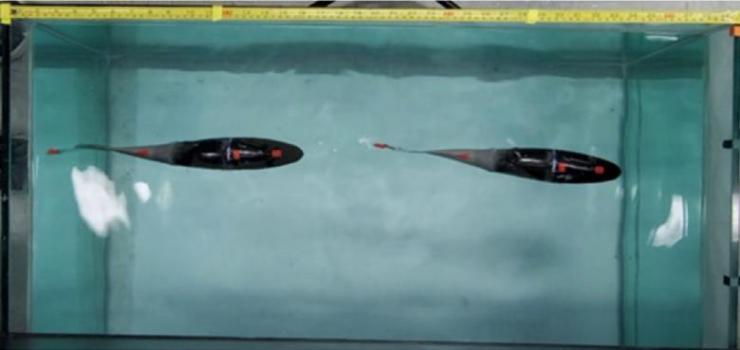External News Alert | Piezoelectric robot trout swims like a real fish
Jul 16, 2021 — Atlanta, GA

Piezoelectric robot trout swims like a real fish
A robotic trout not only swims silently through water at similar speeds to its natural counterpart, it can harvest enough energy to power sensors too. The work by researchers in the US could enable robots to infiltrate schools of fish to study them, monitor marine pollution or even operate as naval spies.
Swimming robots are nothing new, but they often require bulky and loud motors with complex mechanisms. More recent robotic fish have been made using soft smart materials but they can only swim slowly or depend on temperature changes to work
Alper Erturk at the Georgia Institute of Technology thinks that piezoelectric materials are the answer to overcome these limitations. His group made the first untethered piezoelectric robot fish in 2013. Now, Erturk’s team has built on this work by streamlining a robot into the size and shape of rainbow trout, reaching speeds comparable to the real thing.
Piezoelectric materials comprise flexible fibres that expand and contract like muscles in response to electricity. However, they can also generate electricity when the fibres are vibrated by an external force such as wind or flowing water. Flying and land-based robots have been made with the material before.
Erturk’s robotic fish has a silicone tail fin that’s sandwiched between two layers of a piezoelectric material. This material contains fibres of lead zirconate titanate that are separated between layers of a flexible epoxy resin. This is overlaid with waterproof electrodes embedded in a polyimide film.
- By James Urquhart
DOI: 10.1088/1748-3190/ac011e




